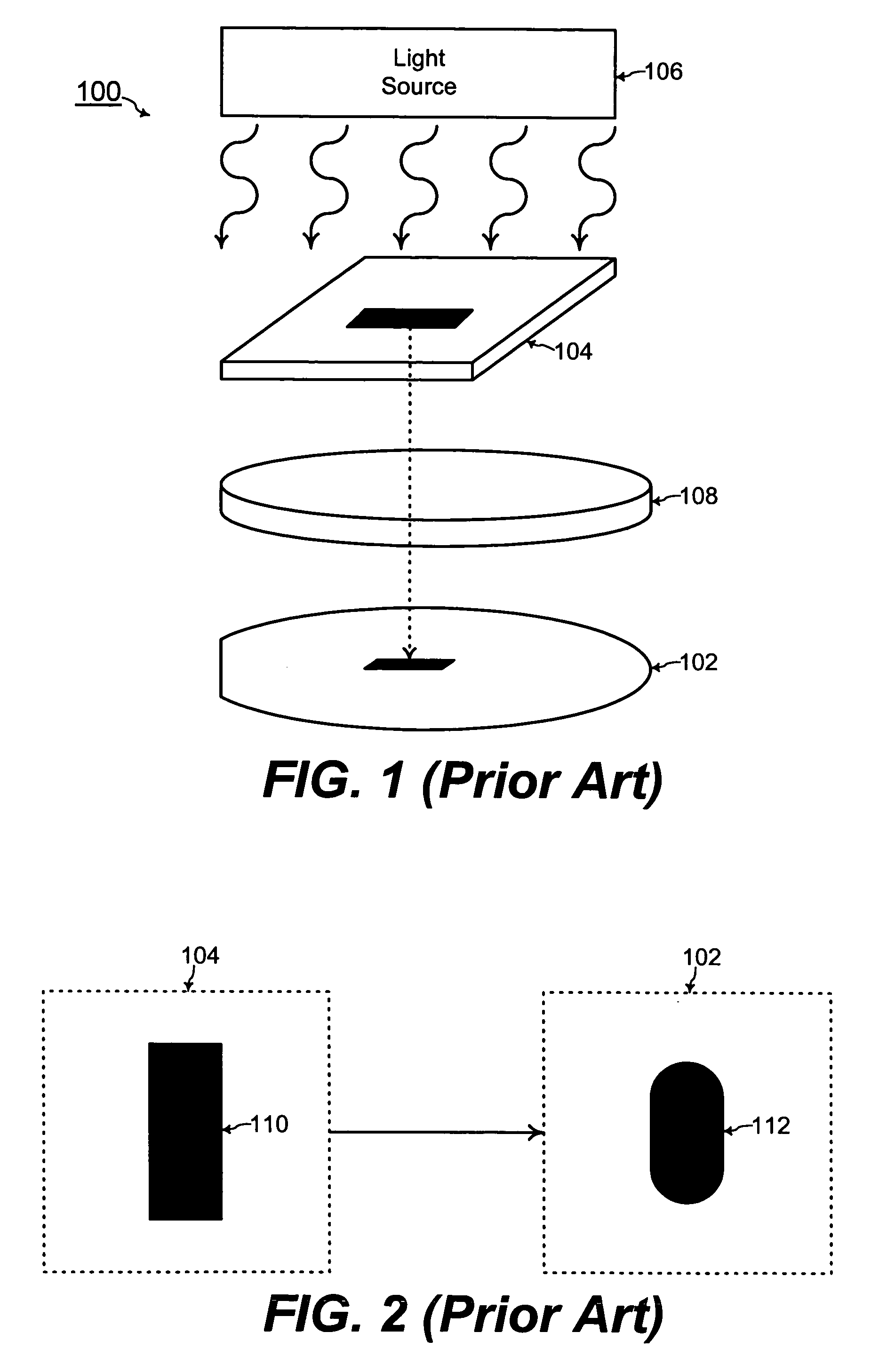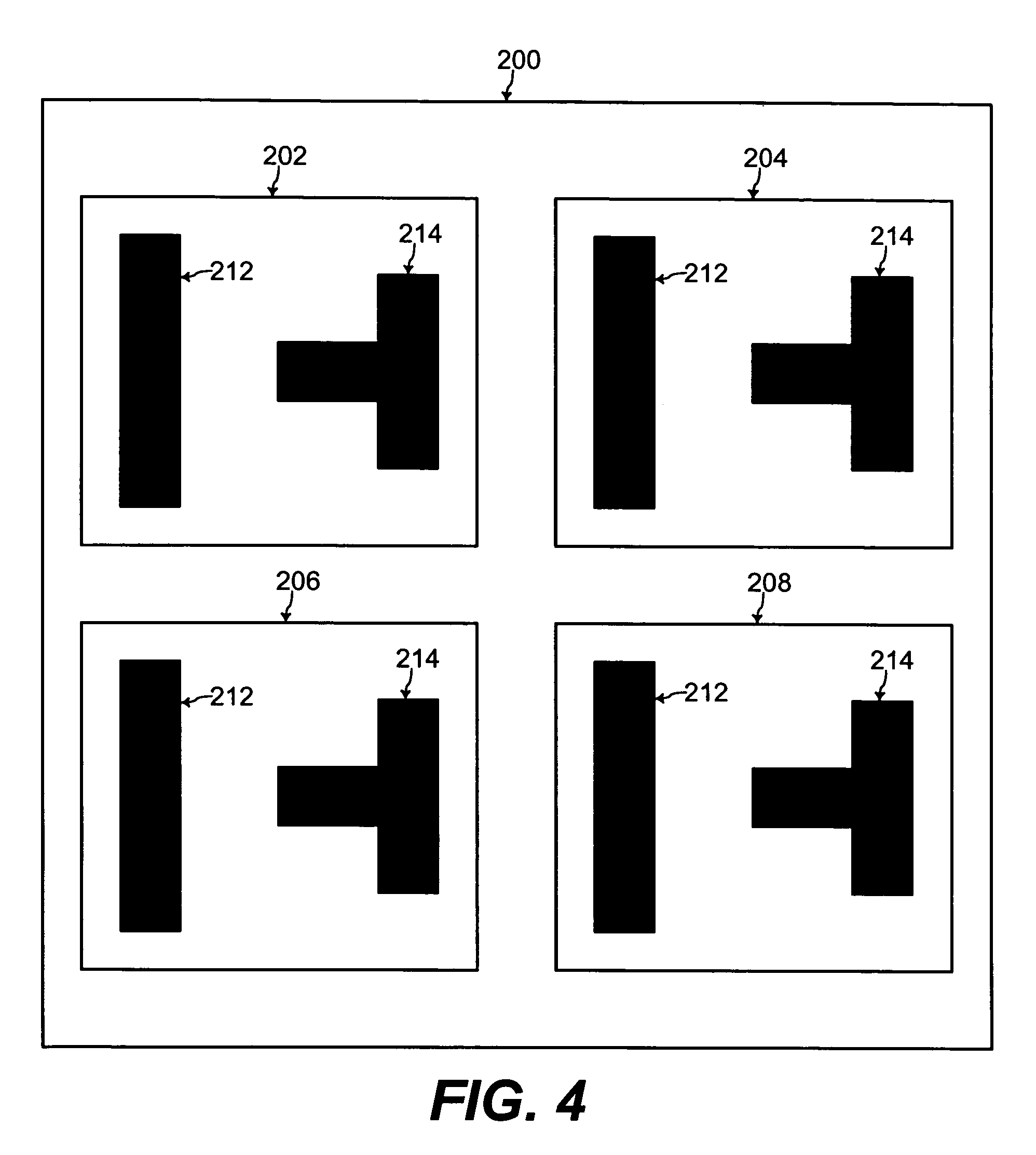Method and system for determining optimum optical proximity corrections within a photolithography system
a photolithography system and optical proximity technology, applied in the field of integrated circuit fabrication, can solve the problems of tedious manual determination by trial and error and prone to human error, and achieve the effect of efficient and accurate determination
- Summary
- Abstract
- Description
- Claims
- Application Information
AI Technical Summary
Benefits of technology
Problems solved by technology
Method used
Image
Examples
Embodiment Construction
[0029]According to a general aspect of the present invention, optimum optical proximity corrections (OPC) are determined for an IC (integrated circuit) process and for a photolithography system. The optimum optical proximity corrections (OPC) typically would vary depending on the IC (integrated circuit) process since dimensions and density desired for an IC (integrated circuit) process varies. In addition, the optimum optical proximity corrections (OPC) typically would vary depending on the photolithography system since different components within different photolithography systems would cause different non-linear distortions on the patterned polygons on the semiconductor wafer.
[0030]FIG. 7 shows a flow-chart of steps of operation for determining optimum optical proximity corrections (OPC) according to an embodiment of the present invention. Referring to FIG. 4, for determining optimum optical proximity corrections (OPC), an array of mask areas are formed on a reticle 200 including ...
PUM
| Property | Measurement | Unit |
|---|---|---|
| wavelength | aaaaa | aaaaa |
| area | aaaaa | aaaaa |
| microscopy | aaaaa | aaaaa |
Abstract
Description
Claims
Application Information
 Login to View More
Login to View More - R&D
- Intellectual Property
- Life Sciences
- Materials
- Tech Scout
- Unparalleled Data Quality
- Higher Quality Content
- 60% Fewer Hallucinations
Browse by: Latest US Patents, China's latest patents, Technical Efficacy Thesaurus, Application Domain, Technology Topic, Popular Technical Reports.
© 2025 PatSnap. All rights reserved.Legal|Privacy policy|Modern Slavery Act Transparency Statement|Sitemap|About US| Contact US: help@patsnap.com



